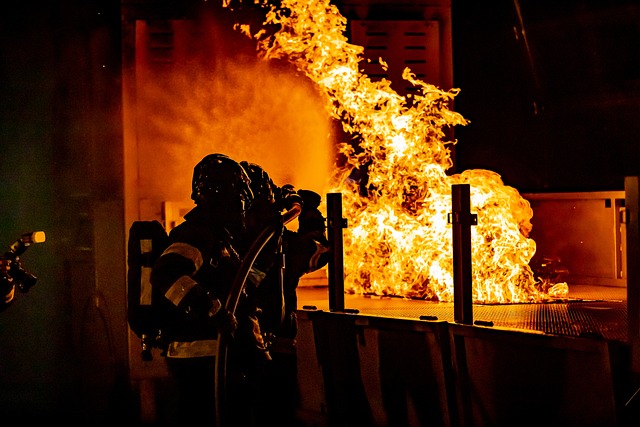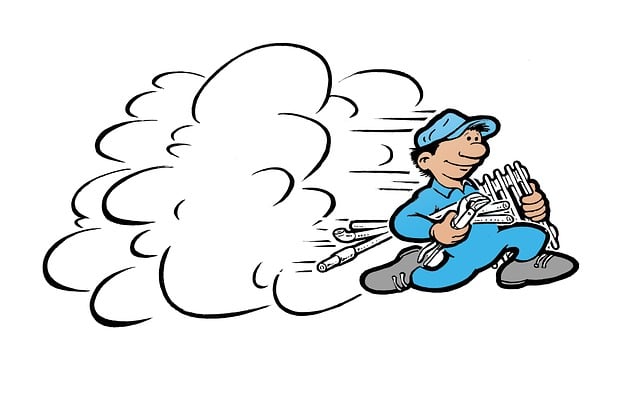Heater issues can be prevented through regular maintenance and immediate action for emergencies. Recognize critical signs like system failure, unusual noises, or cold air blasts. DIY temporary fixes for minor issues are possible, but complex tasks require professional intervention. Schedule annual inspections, clear vents, replace filters, and monitor for leaks to avoid costly emergency heating repair.
“Stay cozy all season long with efficient heater repair and installation practices. This comprehensive guide covers everything from identifying common issues like thermostat malfunctions and inadequate heat output to performing quick troubleshooting tips. Learn when it’s time to call a professional for emergency heating repair, and discover a step-by-step process for installing a new heater. Additionally, discover the secrets to maintaining your heater for optimal efficiency, ensuring comfort and cost savings year-round.”
- Identifying Common Heater Issues: Quick Troubleshooting Tips
- Emergency Heating Repair: When to Call a Professional
- Installing a New Heater: A Step-by-Step Guide
- Maintaining Your Heater for Optimal Efficiency
Identifying Common Heater Issues: Quick Troubleshooting Tips

Heater issues can often arise without much warning, leading to uncomfortable living conditions and even potential safety hazards. Knowing common problems and quick troubleshooting tips can help in navigating emergency heating repair situations effectively. One frequent issue is a frozen heating element, which can be addressed by carefully thawing it using warm water or a hairdryer. Regular maintenance like cleaning the heater’s coils and checking for gas leaks can also prevent future problems.
While DIY heater repairs might seem appealing, especially for minor issues like fixing a frozen element, it’s essential to consider the complexity of some tasks. Heater repair vs replacement debates often arise; however, professional intervention is recommended for more intricate problems. Identifying issues early on and taking timely action, whether through quick fixes or expert services, ensures your home stays warm during chilly weather, preventing discomfort and potential damage caused by inefficient heating systems.
Emergency Heating Repair: When to Call a Professional

In the event of an unexpected breakdown or malfunction, immediate action is crucial when it comes to emergency heating repair. Homeowners should be aware of the signs indicating that a professional intervention is necessary. For instance, if your heater stops functioning completely during cold weather, especially in the middle of the night, it’s time to call in the experts. Similarly, persistent issues like a loud rumbling noise, unusual smells, or a constant blow of cold air from vents suggest more serious problems that require prompt attention.
When considering emergency heating repair, understanding critical factors such as fixing a leaky heating duct can significantly impact energy efficiency and overall system performance. Additionally, addressing a faulty electric heater promptly is essential to prevent potential hazards. Homeowners might temporarily fix issues like a leaky duct or a faulty electric heater, but these are temporary band-aids. It’s vital to have a reliable professional assess the situation, provide an accurate diagnosis, and offer long-lasting solutions to ensure a comfortable and safe living environment throughout the year.
Installing a New Heater: A Step-by-Step Guide

Installing a new heater is a task best left to professionals when dealing with gas or electricity. However, for those confident in their DIY skills, here’s a simplified step-by-step guide. Begin by shutting off the power or gas supply to the old unit (this is crucial for safety). Next, remove the old heater carefully, noting its placement and connections. Prepare the new heater according to the manufacturer’s instructions, ensuring all parts are in place.
Position the new heater, checking that it fits well and is level. Reconnect the gas or electrical supply, double-checking all connections. Test the unit to ensure it functions correctly before turning on the power or gas supply again. This approach can be useful in emergency heating repair situations, but remember, common reasons for heater breakdown include issues with elements, thermostats, or faulty wiring, so regular maintenance is key to avoiding unexpected disruptions.
Maintaining Your Heater for Optimal Efficiency

Maintaining your heater regularly is key to ensuring optimal efficiency and longevity. A well-maintained heating system runs smoothly, saves energy, and prevents costly emergencies. Start by scheduling annual professional inspections to catch any potential issues early on. These professionals can perform a thorough check-up, clean or replace filters, and ensure all components are functioning at peak performance.
In between professional visits, you can take some simple steps yourself. Regularly clearing debris from vents and replacing air filters as recommended by the manufacturer is crucial for airflow efficiency. Additionally, checking for any leaks or strange noises indicates potential problems that may require immediate attention, possibly avoiding a costly emergency heating repair. Remember, knowing when to call a heater technician, such as when encountering persistent issues or unusual energy bills, can save you money and keep your space comfortable.
Efficient heater repair and installation is key to maintaining comfort and energy savings. By identifying common issues, knowing when to call a professional for emergency heating repair, understanding the step-by-step process of installing a new heater, and practicing proper maintenance, you can ensure your heating system operates at peak efficiency. Remember, regular upkeep and prompt attention to problems can prevent costly repairs and keep your home warm all season long.
